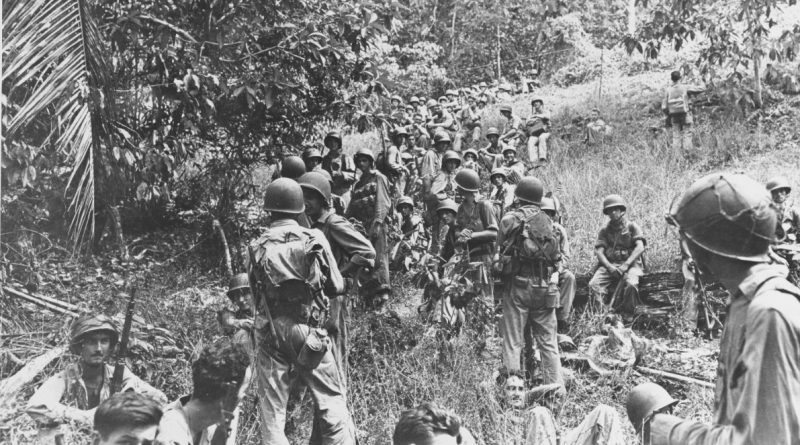August 7 in U.S. military history
1782: General George Washington establishes the Badge of Military Merit, America’s first military decoration and perhaps the first-ever decoration awarded to common soldiers. A purple heart, made from a cloth badge, was issued for “instances of unusual gallantry in battle […] extraordinary fidelity and essential service.” Today’s Purple Heart medal, awarded to service members killed or wounded in combat, traces its roots to Washington’s Badge.
During World War II, the military ordered well over 1 million Purple Hearts in anticipation of a grisly invasion of Japan that, thanks to the atomic bombs, never happened. Purple Hearts awarded over the past 70-plus years into today are still drawn from the WWII stockpile.
1794: When farmers in Pennsylvania rebel against the tax on alcohol to repay war debts, President Washington invokes the Militia Act, calling up and federalizing state militias to help enforce the law. The president himself rides in front of the army, marking one of the only times a sitting U.S. president will lead troops in the field.
1917: At Bazhoces, France, Sgt. William Shemin hops out of his trench and crosses 150 yards of coverless, machinegun-swept ground to rescue fellow soldiers on three occasions. Once enemy fire knocks out all of his commissioned and senior non-commissioned officers, Shemin takes command of the platoon and leads them until he is taken out of action by shrapnel and a bullet to the head. He is originally awarded the Distinguished Service Cross, but 96 years later, the military upgrades to the Medal of Honor.
1942: (Featured image) The 1st Marine Division streams ashore on Japanese-held Guadalcanal in what was the first major ground combat operation by U.S. forces in World War II. On this day, Marines also land at – and quickly secure – Tulagi and other islands and atolls in the British Solomons. The Marines will slug it out with the Japanese defenders for six months before securing Guadalcanal, using the captured islands as staging bases for the Allied campaign of island hopping through the Solomons.
1944: When enemy machinegun fire halts the progress of his company, Staff Sgt. Stanley Bender climbs to the top of a disabled tank to determine where the enemy positions are. For two minutes, he stands defiant while enemy bullets bounce off his makeshift observation platform. Spotting the machinegun nests on a knoll 200 yards away, he leads his squad through withering fire to an irrigation ditch. As his men provide cover fire, Bender calmly walks around to the rear of the first machinegun crew, avoiding both enemy and friendly fire, and dispatches the Germans with one burst of his weapon. He ignores incoming fire and knocks out a second position. His fellow soldiers rush the remaining enemy soldiers and capture the town of La Fonde, France. Thanks to Bender’s incredible bravery, 37 German soldiers are dead, 26 captured along with two anti-tank guns, one town, and three intact bridges across the Maravenne River. Staff Sgt. Bender is awarded the Medal of Honor.
1964: Congress overwhelmingly passes the Gulf of Tonkin Resolution, enabling Pres. Lyndon Johnson to increase U.S. involvement in Vietnam – and eventually leading to full-scale war.
1990: Pres. George H.W. Bush announces the “wholly defensive” Operation DESERT SHIELD following Saddam Hussein’s invasion of Kuwait, seeking to prevent the Iraqi dictator from entering Saudi Arabia and seizing control of most of the world’s oil reserves. Two carrier battle groups are dispatched to the area, as well as the deployment of Air Force F-15s and F-16s, and the military buildup of over 500,000 troops begins.
